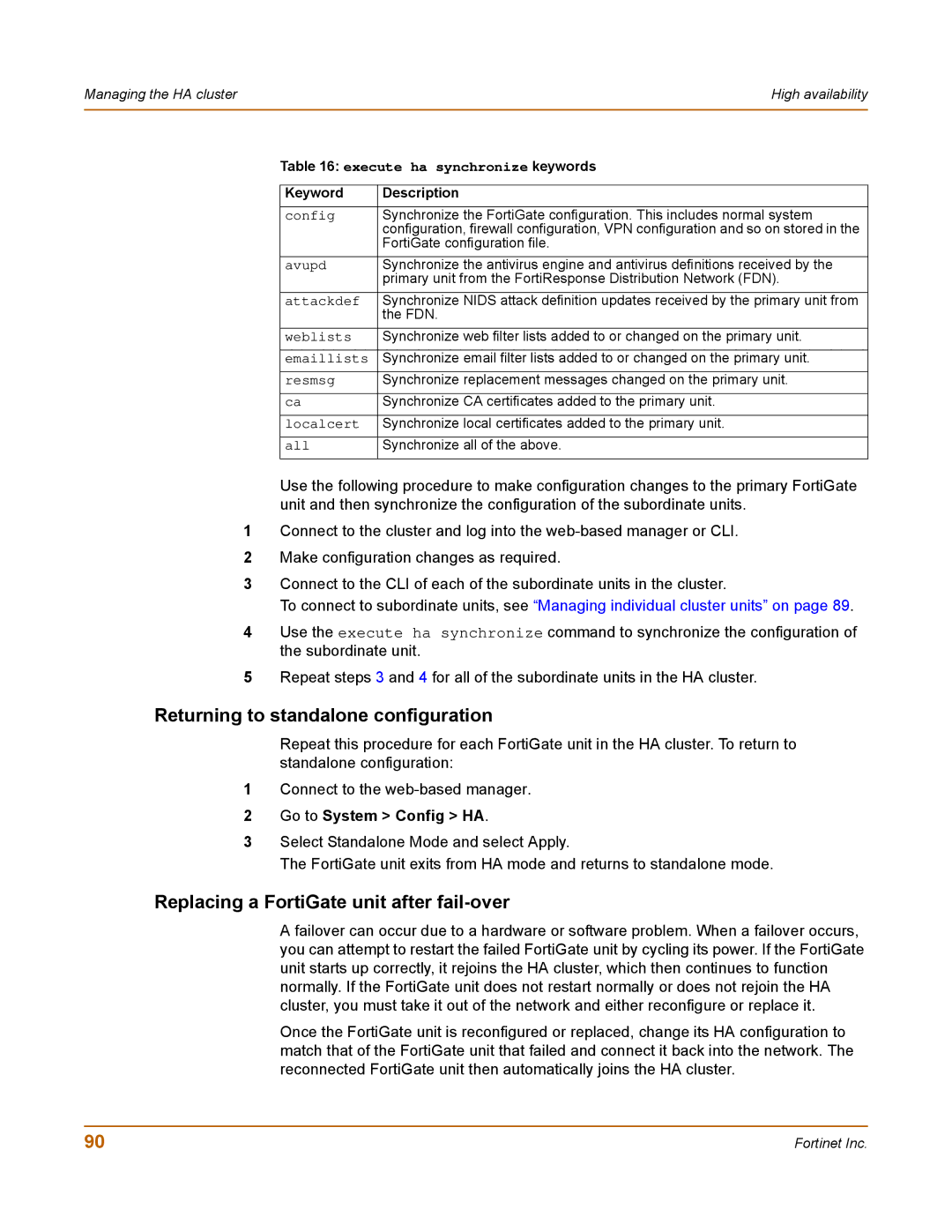Managing the HA cluster | High availability | |
|
|
|
| Table 16: execute ha synchronize keywords | |
|
|
|
| Keyword | Description |
|
|
|
| config | Synchronize the FortiGate configuration. This includes normal system |
|
| configuration, firewall configuration, VPN configuration and so on stored in the |
|
| FortiGate configuration file. |
|
|
|
| avupd | Synchronize the antivirus engine and antivirus definitions received by the |
|
| primary unit from the FortiResponse Distribution Network (FDN). |
|
|
|
| attackdef | Synchronize NIDS attack definition updates received by the primary unit from |
|
| the FDN. |
|
|
|
| weblists | Synchronize web filter lists added to or changed on the primary unit. |
|
|
|
| emaillists | Synchronize email filter lists added to or changed on the primary unit. |
|
|
|
| resmsg | Synchronize replacement messages changed on the primary unit. |
|
|
|
| ca | Synchronize CA certificates added to the primary unit. |
|
|
|
| localcert | Synchronize local certificates added to the primary unit. |
|
|
|
| all | Synchronize all of the above. |
|
|
|
Use the following procedure to make configuration changes to the primary FortiGate unit and then synchronize the configuration of the subordinate units.
1Connect to the cluster and log into the
2Make configuration changes as required.
3Connect to the CLI of each of the subordinate units in the cluster.
To connect to subordinate units, see “Managing individual cluster units” on page 89.
4Use the execute ha synchronize command to synchronize the configuration of the subordinate unit.
5Repeat steps 3 and 4 for all of the subordinate units in the HA cluster.
Returning to standalone configuration
Repeat this procedure for each FortiGate unit in the HA cluster. To return to standalone configuration:
1Connect to the
2Go to System > Config > HA.
3Select Standalone Mode and select Apply.
The FortiGate unit exits from HA mode and returns to standalone mode.
Replacing a FortiGate unit after fail-over
A failover can occur due to a hardware or software problem. When a failover occurs, you can attempt to restart the failed FortiGate unit by cycling its power. If the FortiGate unit starts up correctly, it rejoins the HA cluster, which then continues to function normally. If the FortiGate unit does not restart normally or does not rejoin the HA cluster, you must take it out of the network and either reconfigure or replace it.
Once the FortiGate unit is reconfigured or replaced, change its HA configuration to match that of the FortiGate unit that failed and connect it back into the network. The reconnected FortiGate unit then automatically joins the HA cluster.
90 | Fortinet Inc. |
